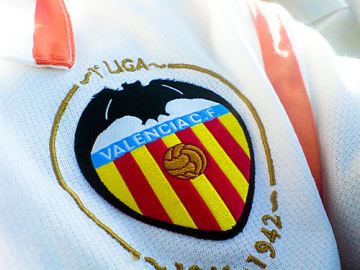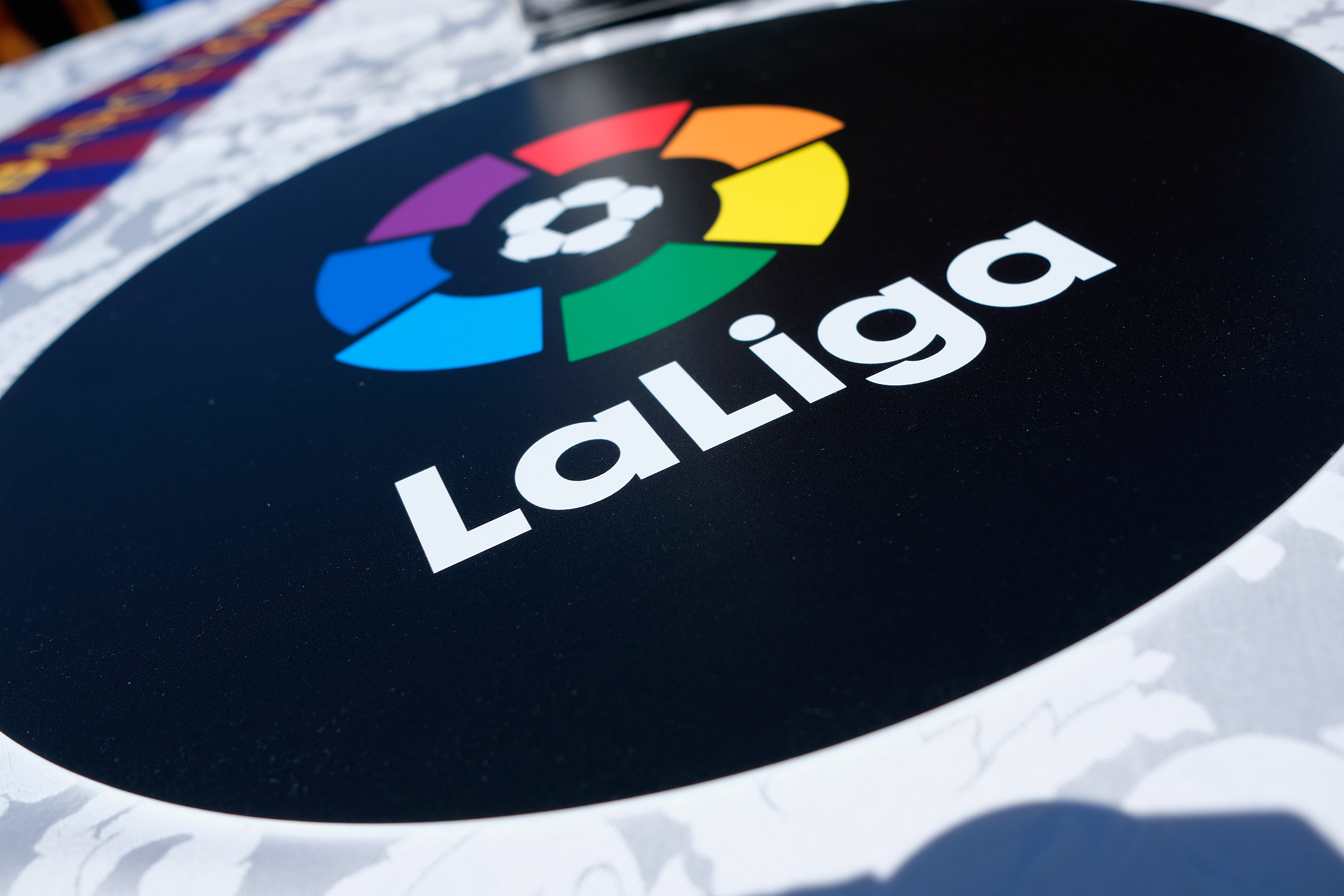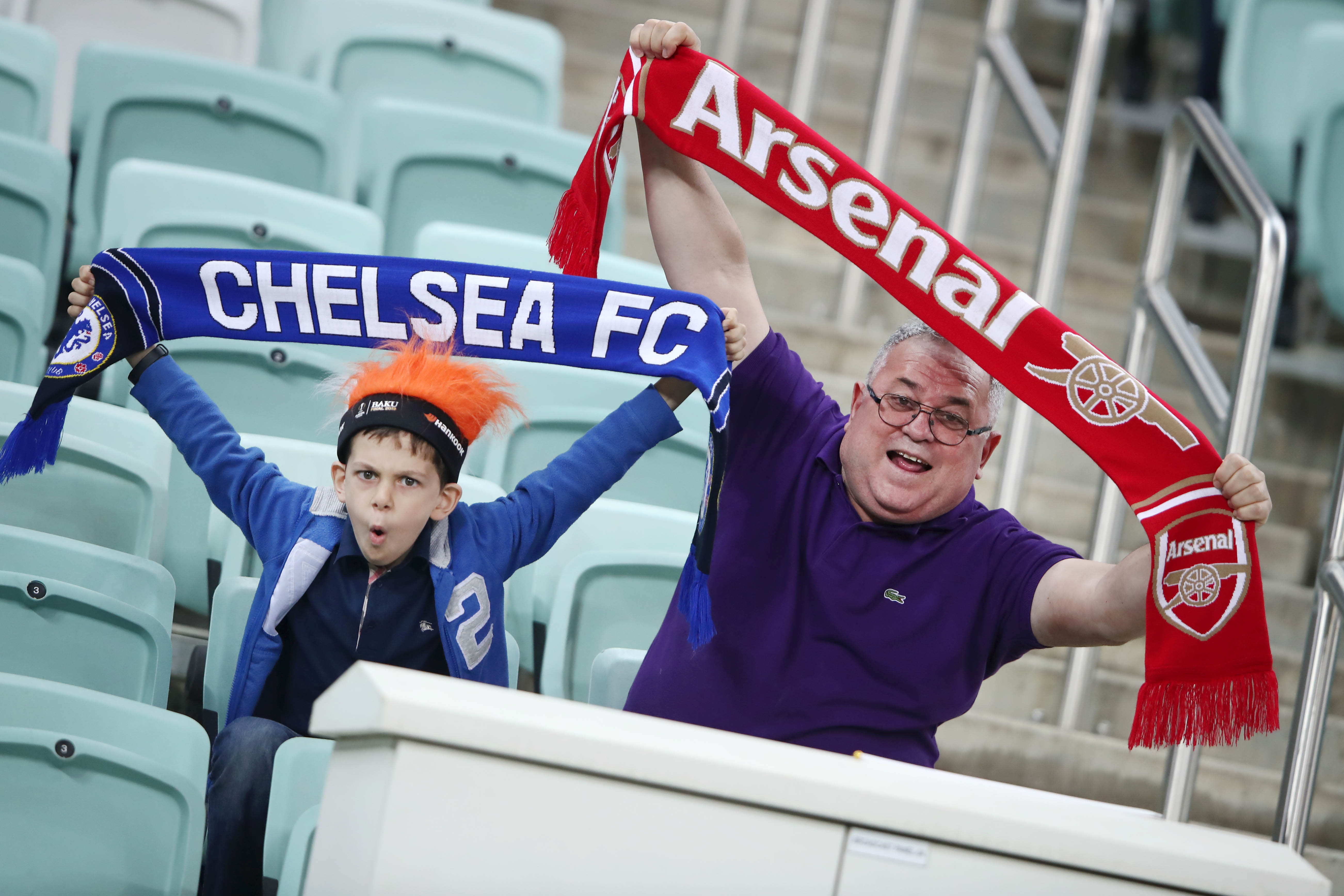They have often been in the shadows of their more illustrious counterparts. However, they still managed to carve a niche for themselves in the history of World Football. With 24 trophies in their 92 years of history, Valencia has given the world a much needed respite from the Spanish duopoly.
The Humble Beginning
In the year 1919, the idea to create a club was put forward in the Turia River region in the city of Valencia. Quite remarkably, Octavio Augusto Milego Díaz, was ‘elected’ the first president of the nascent Los Che. What makes this entire episode a bit startling is the fact that the first president was elected by flipping a coin! There has to be a loser when a coin is flipped and hence Gonzalo Medina Pernás, the unlucky contestant, went on to head the department of the constituent and festivities commission.
Milego and Medina worked closely along with Pascual brothers and Julio Gascó, Andrés Bonilla, José Llorca, Fernando Marzal and Adolfo Moya – the first Valencia administration. Their efforts didn’t bear fruits instantly, thanks to the lack of publicity in the early part of the twentieth century. Even before the inception of Valencia, football had its own space in Spain’s third largest city, courtesy the citrus fruit trade with Great Britain. British sailors were often spotted playing the game on the beaches and curiosity pulled in the Spaniards without much hassle. Even before the origin of the club, the city had its share of football clubs in Levante, Gimnástico, Hispania or Hispano. Little did they know that in years to come, it’d be another newly established club that would give them an identity on the global platform.
Valencia played their first match away from their ‘home’ against Valencian Gimnástico and lost. Marco, Peris, Julio Gascó, Marzal, Llobet, Ferré, Fernández, Umbert, Martínez Ibarra, Aliaga and Gómez Juaneda share the honour of representing the Los Che for the first time in history. The club’s first home ground was the Algirós, which opened on the 7th of December of 1919. For the next 4 years, Algirós served as Valencia’s den and then they moved to the Mestalla.
Valencia’s importance was highlighted because of the fact that they had some great players in Arturo Montesinos and Eduardo Cubells. Their aspiration far exceeded the paltry regional championships. Such was the charisma of these two legends that the fans bifurcated into two halves – Montistas, who rooted for Montesinos and Cubellistas, who supported Cubells. Despite this, the fans converged when it came to defending the colours of Valencia Club de Fútbol.
The first time Valencia participated in the Spanish Cup, they played against Sporting Gijon. They welcomed Gijon at the Algirós, which marked a record attendance, and did not disappoint the home fans. The hosts won 1-0, courtesy a goal by Montesinos. However, this victory was short-lived as the Los Che were thrashed by Gijon when they visited them for the return leg, after a month. During those days, goal difference didn’t make much of a difference and since both teams won one game each, a third encounter was set up at a neutral ground. Quite unsurprisingly, Gijon won again. Valencia’s first Spanish Cup outing thus had a premature ending.
Estadio Mestalla – The New Dawn
If the inception of the Los Che can be credited to Octavio Díaz and Gonzalo Pernás, Mestalla can surely be accredited to Ramón Leonarte – the then President of Valencia. For 316 pesetas, the land was purchased in 1923. The amount was a considerable amount then and the money was raised after a lot of loans. A 17000 capacity stadium was commissioned and was under the direct supervision of Francisco Almenar, who went on to become a president.
The sanctimonious home turf was inaugurated on the 20th of May, 1923. Valencia’s cross town rivals, Levante UD played the first match at the recently constructed Mestalla. The home side won and Arturo Montes etched his name in the history of the club, as the first ever scorer at Mestalla. Followed by Levante’s visit, Scottish side Dundee United visited Valencia. The Tangerines went on to register themselves as the first ever away team to win at Mestalla. They played twice and won on both occasions, scoring 4 and conceding none. Valencia started showcasing their potential in the regional championships and this prompted the authorities to increase the capacity from 17000 to 25000. However, a chunk of the stadium succumbed to serious impairments due to aerial bombardments courtesy the Spanish Civil War.

Valencia’s progress was somehow stunted by the Spanish Civil War. What the situation had in store for Los Che was too despondent. Many of the first team members left them by 1940. Military intervention made things worse. In June 1939, Major Alfredo Giménez Buesa was appointed president and Luis Casanova the vice-president. The prime objective was to suppress the professionalism and in turn the republican rumination. However, the indomitable spirit of the club came to the fore in 1941, when Valencia brought back their first major title – a perfect tribute to the Mestalla which stood the toughest of tests during the domestic unrest. Major Giménez was transferred and Casanova succeeded him. Under his leadership, Los Che had one of their best periods in history. It all started with the victory in 1941, they went on to win three Leagues and a couple of domestic cups. Valencia was never the same again.
The Legends of Mestalla
Ever since the inception of the club, Valencia has gone on to make history. Superstars from different generations graced the Mestalla pitch. TheHardTackle looks at a few of the superstars of yesteryears –
1. Eduardo Cubells
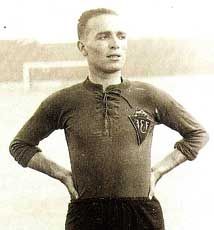 Cubells undoubtedly defines a facet of Valencianism. An inspirational player on the pitch and an extremely dignified individual off it, Cubells had such an impact that a sect of Los Che fans were referred to as Cubellistas. Brilliant passing, reliable penalty kick taking ability, immaculate heading, tantalizing ball control defined Cubells. Unfortunately, the iconic footballer decided to be put out to pasture at the young age of 28 and despite having recurrent opportunities to come out of hibernation, he chose not to. Nonetheless, Cubells continued to work for Valencia and along with Luis Colina, the then technical secretary, formed a formidable administrative partnership at the helm. Later Luis Casanova amalgamated with the duo to form a triumvirate – The Holy Trinity of Valencia.
Cubells undoubtedly defines a facet of Valencianism. An inspirational player on the pitch and an extremely dignified individual off it, Cubells had such an impact that a sect of Los Che fans were referred to as Cubellistas. Brilliant passing, reliable penalty kick taking ability, immaculate heading, tantalizing ball control defined Cubells. Unfortunately, the iconic footballer decided to be put out to pasture at the young age of 28 and despite having recurrent opportunities to come out of hibernation, he chose not to. Nonetheless, Cubells continued to work for Valencia and along with Luis Colina, the then technical secretary, formed a formidable administrative partnership at the helm. Later Luis Casanova amalgamated with the duo to form a triumvirate – The Holy Trinity of Valencia.
Cubells continued for about 2 decades as the principle member of Valencia’s Technical Committee. However, amidst a huge controversial scenario, the former player resigned in 1959, thus bringing an end to an era in Valencia’s history. Quite notably, Luis Casanova too stepped down with Cubells.
2. Arturo Montesinos
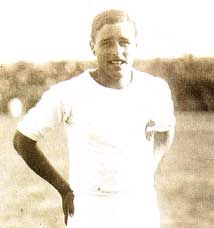 The history of Valencia is incomplete without Montesinos. If Cubells commanded one sect of the Los Che fans – Cubellistas, Montesinos decreed the other half popularly known as Montistas. Valencia had one of their most prolific strikers in Montesinos. Arturo’s association with Valencia is a sheer coincidence. Originally from Basque, Arturo came to Valencia to continue his education. However, fate had other ideas and he landed in a trial session organized by Valencia. Such was the ability of the man that the scouts didn’t hesitate to sign him immediately. When Montesinos started for Valencia, he did not have anybody to partner him while attacking. Thankfully, Eduardo Cubells made his entry then and the two went on to write history for the club. Cubells’ guile coupled with Montesinos’ power and instinct gave birth to a new era in football. Despite the press’ insistence on his inclusion in the Spanish national team, Montesinos was continually ignored. Finally, an unfit and overweight Montesinos brought an end to his career. Coincidentally, Cubells and Montesinos retired together, at the same age of 28, and thus brought to end one of the brightest chapters in Valencia’s history.
The history of Valencia is incomplete without Montesinos. If Cubells commanded one sect of the Los Che fans – Cubellistas, Montesinos decreed the other half popularly known as Montistas. Valencia had one of their most prolific strikers in Montesinos. Arturo’s association with Valencia is a sheer coincidence. Originally from Basque, Arturo came to Valencia to continue his education. However, fate had other ideas and he landed in a trial session organized by Valencia. Such was the ability of the man that the scouts didn’t hesitate to sign him immediately. When Montesinos started for Valencia, he did not have anybody to partner him while attacking. Thankfully, Eduardo Cubells made his entry then and the two went on to write history for the club. Cubells’ guile coupled with Montesinos’ power and instinct gave birth to a new era in football. Despite the press’ insistence on his inclusion in the Spanish national team, Montesinos was continually ignored. Finally, an unfit and overweight Montesinos brought an end to his career. Coincidentally, Cubells and Montesinos retired together, at the same age of 28, and thus brought to end one of the brightest chapters in Valencia’s history.
3. Antonio Puchades
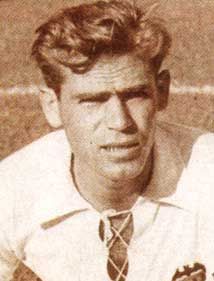 The Spaniard joined Valencia in 1946 and went on to forge a strong relationship with the club and the fans. In his stay of more than a decade, Puchades won 3 major trophies – the coveted La Liga in 1946-47 and the Copa del Rey in 1949 and 1954. One of the best exponents of the 2-3-5 system, Puchades was known for his exemplary physical strength and technicality, which enabled him to orchestrate the team’s offence, even from his defensive midfielder position.
The Spaniard joined Valencia in 1946 and went on to forge a strong relationship with the club and the fans. In his stay of more than a decade, Puchades won 3 major trophies – the coveted La Liga in 1946-47 and the Copa del Rey in 1949 and 1954. One of the best exponents of the 2-3-5 system, Puchades was known for his exemplary physical strength and technicality, which enabled him to orchestrate the team’s offence, even from his defensive midfielder position.
He was a key component of his national team in the 1950 Football World Cup. His partnership with Pasieguito, at the heart of the Los Che midfield was commendable. Unfortunately, the talismanic midfielder retired at the age of thirty-three, due to Sciatica.
4. Waldo Machado
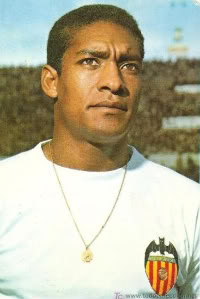 The Brazilian striker signed for Valencia from Fluminense in 1962. He had scored 314 goals in 401 matches for Fluminense and his reputation preceded him. Apart from being a ferocious striker, Waldo was also a fabulous free-kick taker and had the uncanny ability to shoot from anywhere on the pitch. In his first season at Mestalla, he scored 15 goals followed by 12, 18 and Pichichi winning 24 goals in subsequent years.
The Brazilian striker signed for Valencia from Fluminense in 1962. He had scored 314 goals in 401 matches for Fluminense and his reputation preceded him. Apart from being a ferocious striker, Waldo was also a fabulous free-kick taker and had the uncanny ability to shoot from anywhere on the pitch. In his first season at Mestalla, he scored 15 goals followed by 12, 18 and Pichichi winning 24 goals in subsequent years.
The Brazilian won 2 Fairs Cup and a Spanish Cup with Valencia. However, in 1969, the Brazilian left Valencia. Nevertheless, with 117 goals in 216 matches for Valencia, Machado has etched his name in the Mestalla folklore as one of their greatest strikers ever.
5. Mario Kempes
 The El Matador signed for Valencia for the first time in 1976. He was discovered by Pasieguito, Puchades’ midfield partner, and did not quite have the start anyone would have liked. Kempes missed a penalty in his first match for the Los Che. However, he more than made up for it by scoring goals by the truckload. Kempes’ stay at Valencia was extremely eventful. Not only did he win the first World Cup with Argentina in 1978, but also the top scorer in the competition. Prior to the success with the national team, Kempes won two consecutive Pichichis with Valencia. He scored 24 goals in 1976-77 and 28 in 1977-78.
The El Matador signed for Valencia for the first time in 1976. He was discovered by Pasieguito, Puchades’ midfield partner, and did not quite have the start anyone would have liked. Kempes missed a penalty in his first match for the Los Che. However, he more than made up for it by scoring goals by the truckload. Kempes’ stay at Valencia was extremely eventful. Not only did he win the first World Cup with Argentina in 1978, but also the top scorer in the competition. Prior to the success with the national team, Kempes won two consecutive Pichichis with Valencia. He scored 24 goals in 1976-77 and 28 in 1977-78.
Contrary to the quintessential centre-forwards, operating from within the opposition’s penalty box, Kempes had a knack to attack the goal from a long distance, usually from outside the box. Not only did he shoot well, but his work rate and stamina too was praiseworthy and defender usually found it extremely difficult to mark him. In the summer of 1981, Kempes went back to Argentina to play for River Plate. However, the striker came back to Valencia 1982 and played for two more seasons. Kempes won one Copa del Rey (1979), one UEFA Cup Winners’ Cup (1980) and a UEFA Super Cup (1980) and quite deservedly became the fan-favourite. With 116 goals in 184 matches for Valencia over a period of a period of 7 years, the Argentine is an all-time legend at the historic Mestalla.
